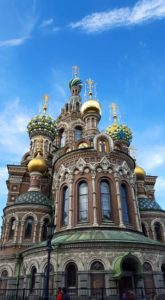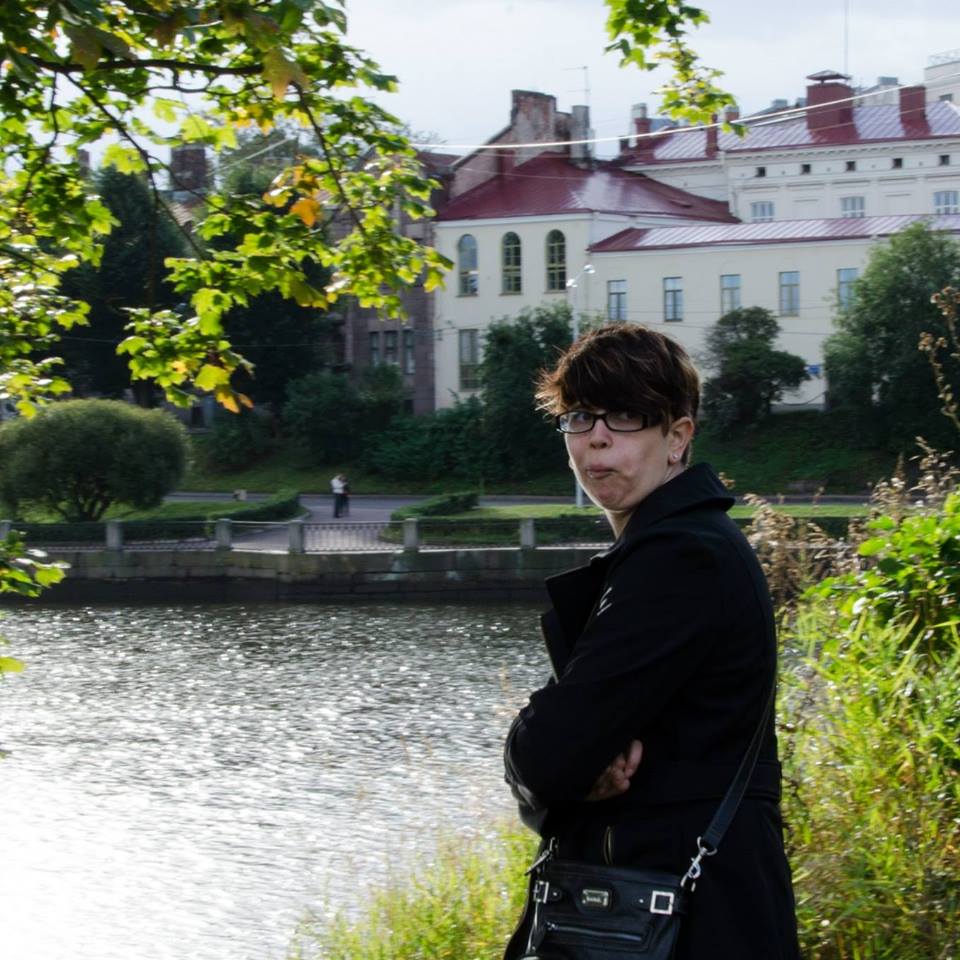I studied abroad in St. Petersburg, Russia in the Fall of 2015.
One highlight? Babies in jars.
If you cross the Dvortsoviy Bridge on Nevsky Prospekt and hang a left you’ll come across the Kuntskamera, Russia’s first anthropological museum. You begin on the first floor and pretend like you’re interested in all the old clothes from cultures across the world, but as you ascend the stairs to the second floor you realize you’re really only there for the third floor. I tried to demystify the world through this museum, but I’d say it’s still more of a gross attraction than educational visit. Not a whole lot of people talk about the clothes and weapons.
So the second floor doesn’t even register as you fly up the stairs to the third floor and find yourself staring at display cases holding the bloated body of a two-headed baby in a jar. Their pale lips puff out, kissing the glass.
Just to the left stands a tiny skeleton with two torsos and two tiny skulls. I don’t know if they were meant to brighten the display case, but a few butterflies find themselves pinned on the wooden shelves. This is just one of ten display cases, one shelf of 30.
Meanwhile, while you’re trying to fight the growing ball of sick in your stomach, children scurry around the floor and point at jars and skeletons. They gasp and exclaim in Russian, giggling and whispering excitedly to each other.
Little Tim Burtons, all of them.
Naturally, I brought my family straight to that museum when they visited. My cousin didn’t speak for a few hours after that. I can still make her go silent for a minute if I mention it.
As fun as that was, the real highlights of the trip were much larger than those two trips. My absolute favorite part was my host family, a young mother, her seven-year-old daughter, and their cat Tigra. I’ve never had a cat, so that was quite the experience. Do cats always shoot around like they’ve been possessed by a demon?
Anyway, if you have the chance to study abroad and stay with a host family, take that opportunity. They turned their home into a second home for me.
My host sister and I did homework together, all three of us cooked pizza together, we threw a Halloween party, and we went to their dacha for a weekend. They took me to Peter and Paul’s Fortress, an art exhibit, a yoga class, and my host mom and her friend even took me to a club on Halloween. My sister and I drew, painted, and folded origami together.
My host mom called me her second daughter, and I honestly felt like her second daughter. I have never experienced such warm hospitality from complete strangers, and that hospitality marked my entire study abroad experience.
The Russian students at the school we attended treated us like fellow students, and when I spent a week in Arkhangelsk, Russia, my host brother and sister treated me like another sibling. Even the landscape felt like home—when I saw birch trees from the plane, I thought it looked like I hadn’t even left Minnesota. The language was hard to get a grasp on at first, but that’s why I went for four months. About halfway through, I could keep up with conversations and my relationships with my family and peers blossomed further.

I cannot sum up every experience and feeling with my host family, but I can namedrop museums, artists, and historical facts to dazzle you and hopefully make you want to travel to St. Petersburg even if you do not stay with a host family.
I remember getting off the Blue Line at the Nevsky metro stop, looking to the right as I exited the station, and seeing The Church of the Savior on Blood, the church built on the site of Tsar Alexander II’s death. About three blocks up sits the Hermitage, and not much farther the Kuntskamera. Right across the station stands the Kazan Cathedral.
The statues outside the Kazan Cathedral stood as tall as they did during the Siege of Leningrad, and not much farther a sign hangs on a building warning citizens that the sign’s side of the street was more dangerous during shelling. And that’s just one side of the Nevsky metro station.
Every corner of that city held history and the spots in between were dedicated to the arts. During our Dostoevsky tour, we looked up and saw a nose sticking out from the side of the building, a reference to Gogol’s short story The Nose.
I lived near a metro station named after Pushkin, the famous Russian poet. Sometimes I would turn down an alley and suddenly face a statue of Rimsky-Korsakov. Of course, St. Petersburg is home to one of the world’s largest museums and many famous authors, poets, composers, and artists, so I should have known they would flaunt their history and arts at every turn. All the same, it was a pleasant surprise.
I’ve been back for a year, but I still miss Russia. Most of all, I miss my host family. But that just means I have to make an opportunity to go back—I have to visit my mom and sister across the world, right?
